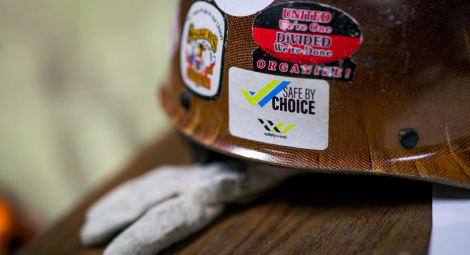Assessing minor burns in the workplace

Burns are a common workplace injury, and they can happen anywhere—from kitchens and construction sites to hospitals, warehouses and manufacturing facilities.
While minor burns can usually be treated on the spot with simple first aid, some burns may be more serious and require immediate professional medical attention. Regardless, timely treatment can make a big difference. Make sure employees know how to treat superficial burns, and how to recognize when an injury is something more serious.
Burns by degrees: What’s minor, what’s not
The three primary types of burns are classified by depth and damage to the skin. Knowing how severe a burn is will determine if it requires simple first aid, urgent care or emergency treatment.
- First-degree burns affect only the skin’s surface and usually cause mild pain, redness and minor swelling. Common culprits are overexposure to the sun, splashes of hot water, small flames and caustic chemicals that are quickly washed off.
Treatment plan: Simple first aid is typically fine, although larger burns should be examined by a medical provider.
2. Second-degree burns penetrate the second layer of the skin. Along with redness and pain, these burns also cause blisters and more extensive skin damage. The skin tissue is at higher risk for infection and can take several weeks to heal. Second-degree burns are typically caused by scalding hot water or other liquids
Treatment plan: A trip to urgent care or a primary care doctor is recommended.
3. Third-degree burns involve all layers of the skin and can cause severe damage, charring and nerve death. Because the skin is severely damaged, blisters do not develop, and the burns cannot heal without significant scarring. Third-degree burns can be caused by hot oil, touching hot surfaces or chemical exposure.
Treatment plan: Call 911 or go to the emergency room right away.
Treating minor burns
Minor burns can typically be treated without seeing a doctor. When a workplace burn occurs and it looks like it isn’t serious, employees should take these simple steps to relieve pain and avoid infection:
- Remove any clothing that has been splashed with hot liquid.
- Place the burned area under cool running water for a minimum of 5 minutes. Never use ice. It can cause frostbite and make the burn worse.
- Take ibuprofen or acetaminophen for pain.
- Apply lidocaine, an anesthetic, to the area with aloe vera gel or cream to soothe skin. Avoid using cotton balls. The small fibers can stick to the burn and cause infection.
- Use an antibiotic ointment and loose gauze to protect the burned area.
Always seek medical assistance if a burn appears to be more serious. This is particularly important if the burns cover a large area of the body, or if a burn affects the face, hands, feet or genitals. If signs of infection occur, such as increased pain or redness or a fever develops, a medical provider should be seen right away.
Workforce care, even after hours
Healthy employees are the foundation of a healthy business. That’s why MultiCare Occupational Medicine offers a comprehensive suite of services to meet your needs, from employment physicals and screenings to injury and return-to-work care.
When you partner with us, employees have access to any of our Occupational Medicine clinics. And if you or an employee need care after hours or during weekends for a minor workplace burn or other injury, our Indigo Health urgent care locations are available for initial injury assessment and will seamlessly coordinate care with our Occupational Medicine providers. Indigo Health urgent care clinics are open every day, 8 am to 8 pm. When additional care is needed, MultiCare Occupational Medicine is connected to all the resources of MultiCare Health System.



